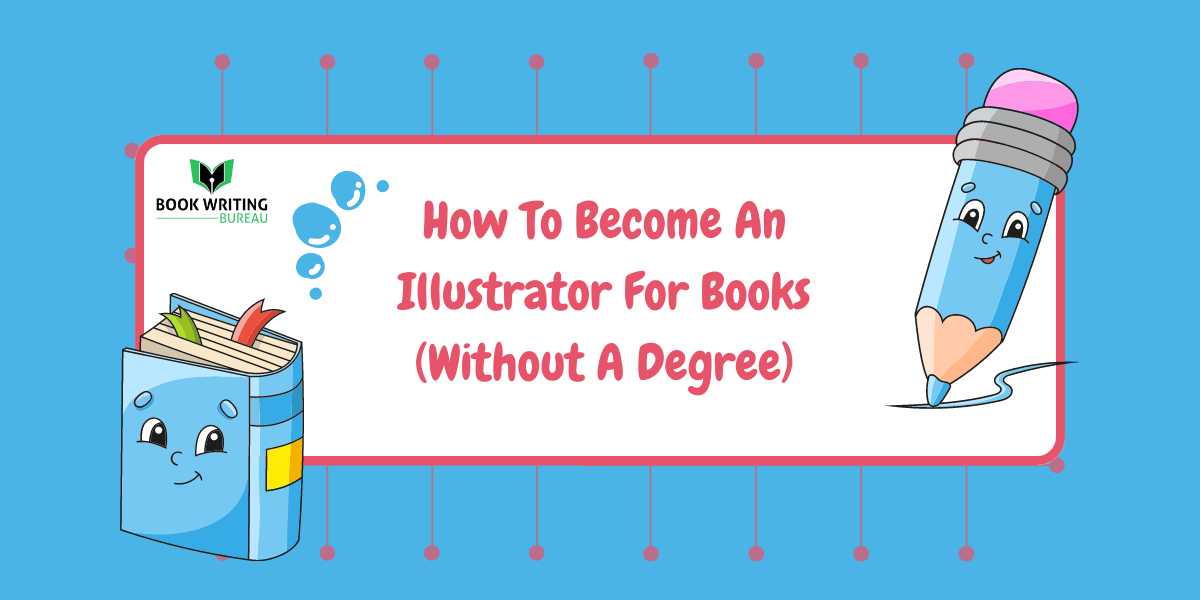
Illustration
Play the entire article for audio content.
Bringing words to life with interesting images is a skill. It can take readers to other places, make them feel strong feelings, and leave a lasting mark on the literature world. Knowing how to become an illustrator is for you if you love art and telling stories.
Take a chance, use your creative skills, and dive into this visually stunning narrative. Your creative talents should make an everlasting impression on the world of books.
Turn your illustrations into captivating companions for readers worldwide, even without a formal degree in the field. Use your creativity and make a mark in the world of book illustration. Take your drawings to ignite emotions and spark imaginations, leaving a lasting legacy on literature’s pages. Grab your sketchbook and digital tools. It’s time to explore!
Tips to Become an Illustrator for Books
Unleash Your Creative Potential
The first step of how to become an illustrator is making a name for yourself as a book illustrator and developing your natural artistic abilities. One must have a firm grasp of narrative and aesthetics to visualize in a way that complements the text. Here’s the first step:
Cultivate Your Artistic Skills
It’s important to learn the basics of art. Practice drawing, sketching, and painting every day to get better at it. Also, try out different styles and methods to come up with a unique look that fits your artistic vision.
Study the Craft
Learn and improve as much as you can to know how to become an illustrator. Study old and new artists to learn more about their styles and methods. So, look at how they use design, color, and point of view to show feelings and tell stories.
Learn Digital Tools
Using digital illustration tools effectively is more important in the modern day. Master a graphic editing program such as Adobe Illustrator, Photoshop, or Procreate. Therefore, create and modify graphics with more control and accuracy with these tools.
Building Your Illustrator Portfolio
Your portfolio is like a business card to prospective customers or publishers—showcasing your talents, experience, and variety. Build a resume highlighting your ability to distill the core of a narrative into eye-catching images.
Diverse Range of Work
Showcase your versatility by including a range of projects in your portfolio. Demonstrate your adaptability and willingness to work with various narrative approaches by drawing scenes from various stories.
Personal Projects
Take up side projects that will give your creativity room to grow. You may use these projects to find illustrators for children’s books for new ideas and approaches that will set you apart.
Collaborate and Network
Work with authors, writers, and other artists to broaden your horizons. Also, making new connections expands your horizons and may lead to fruitful partnerships that boost your resume.

Navigating the Book Illustration Industry
To get into the book design business, you need a plan. Even though you don’t need a degree, it’s important to build a good base and understand how the business works:
Continuous Learning
Sign up for classes, online courses, and conferences to improve your skills and keep up with the latest trends in your field. However, learning to become an illustrator can bring many opportunities; trust the process.
Self-Promotion
Set up an online profile for your job through a professional website or social media sites. Share your works, ideas, and behind-the-scenes looks often to build a loyal following.
Approaching Publishers and Authors
Write a unique pitch showing off your style and knowledge and send it to writers, publishers, and managers. Share how your pictures can improve their projects and bring their stories to life. You can promote yourself as a book illustrator for hire by showcasing your skills.
The Power of Persistence
Becoming a popular book artist is a long process that requires patience, drive, and a strong desire to succeed. Accept failure as a chance to learn and get better, and keep working on your craft:
Feedback is Fuel
Accept helpful feedback and use it to improve your work. Also, peers, teachers, and clients who give you helpful comments can help you grow.
Evolve and Adapt
Keep an eye out for new trends and tools. If you change your style to match the changing market, your work will stay fresh and interesting.
Celebrate Milestones
Recognize and praise what you have done along the way. Every job you finish, a compliment from a client, or a new chance shows how far you’ve come and how hard you’re working.
Discovering the Essence of Book Illustration
Illustration is more than just putting pictures on a page; it’s an orchestra of imagination and stories. Thus, to make a name for yourself in this field, you need to know the details of this art form.
Unveiling the Magic of Visual Narratives
At its heart, book illustration is the art of creating visual storytelling that complements the text. Dig into the narrative craft and figure out how to become an illustrator. Also, visualize the text’s characters, situations, and interactions.
The Alchemy of Imagination and Craftsmanship
Illustrators who are good at their jobs can combine their creative skills with their technical skills. In addition, learn how to turn your creative ideas into amazing illustrations that interest people.
Crafting Your Creative Sanctuary: Setting Up Your Workspace
A conducive workspace is the birthplace of artistic brilliance. Designing a sanctuary where your creativity can flourish is essential in your journey.
The Ergonomics of Inspiration
When planning for lengthy drawing periods, prioritize ergonomic furniture and lighting. The ability to know how to become an illustrator and get things done increases when your workplace meets these criteria.
Organizing Your Arsenal
Efficiency is essential. Set up an orderly method for hiring a book cover designer, and storing and retrieving your creative materials and equipment. Also, having all of your supplies close at hand will help you stay focused on your work.
From Blank Canvas to Visual Poetry: The Illustration Process
Embark on an exploration of the illustration process, from conceptualization to the final strokes of your masterpiece.
Conjuring Ideas: The Spark of Creativity
Inspiration can strike at any moment. Cultivate the habit of capturing your ideas in a sketchbook or digital platform, ensuring none of your creative sparks go unnoticed.
Breathing Life into Sketches
Transform preliminary sketches into intricate illustrations. Delve into the techniques of becoming an illustrator by investing time in shading and perspective to infuse your drawings with depth and dimension.
Colors that Speak Volumes
The choice of colors wields immense storytelling power. Learn the psychology of colors and how to select palettes that evoke the intended emotions within your illustrations.
Illustration Evolution: Adapting Styles and Trends
Stagnation is the enemy of creativity. Explore how to become an illustrator and adapt your style to remain relevant in an ever-evolving industry.
Exploring Artistic Versatility
Challenge yourself to experiment with various illustration styles. Adapting your visual language to suit different genres and moods can expand your creative horizons.
Nurturing a Signature Touch
While versatility is key, nurturing a signature style can set you apart. Develop a distinctive element in your illustrations that becomes synonymous with your work.
Forging Partnerships: Collaborating with Authors and Publishers
Collaboration is the heartbeat of book illustration. Also, building meaningful partnerships with authors and publishers can open doors to exciting projects.
Synchronizing Vision with Words
Collaborative harmony is essential. Cultivate the skill of translating an author’s vision into visual form, forging a powerful synergy that elevates the storytelling experience.
Pitching Your Creative Brilliance
Craft persuasive pitches that showcase your ability to enhance narratives through illustrations. Therefore, a compelling pitch can pique the interest of authors and publishers alike.
The Digital Canvas: Mastering Digital Illustration Tools
Digital illustration tools are your passport to limitless creativity in a world driven by technology.
Unveiling the Digital Toolkit
Explore the functionalities of software like Adobe Illustrator and Photoshop. Delve into the world of layers, brushes, and effects to craft digital illustrations with finesse.
From Pixels to Print: Digital to Physical
Learn the art of translating digital illustrations into tangible formats. Understand resolution, file formats, and color profiles to ensure your creations look stunning in print.
Resilience in the Face of Challenges: Overcoming Creative Block
Even the most seasoned illustrators face creative block. Also, developing coping strategies can help you navigate these challenging periods.
Take Breaks
Accept creative blocks as part of the artistic journey. Use these moments to reflect, recharge, and explore new sources of inspiration.
Finding Inspiration in Unlikely Places
Inspiration can be found in the most unexpected corners. Engage in activities outside of art to stimulate your creativity and infuse new life into your illustrations.
Conclusion:
The road to becoming an illustrator is rich and rewarding for those who are committed, eager, and willing to work hard. You can make a name for yourself in this exciting world of creativity by improving your artistic skills, putting together a strong resume, learning how the business works, and sticking with problems.
Remember that a degree can help you get in the door, but your ability, dedication, and love of telling stories make you a great book artist.



